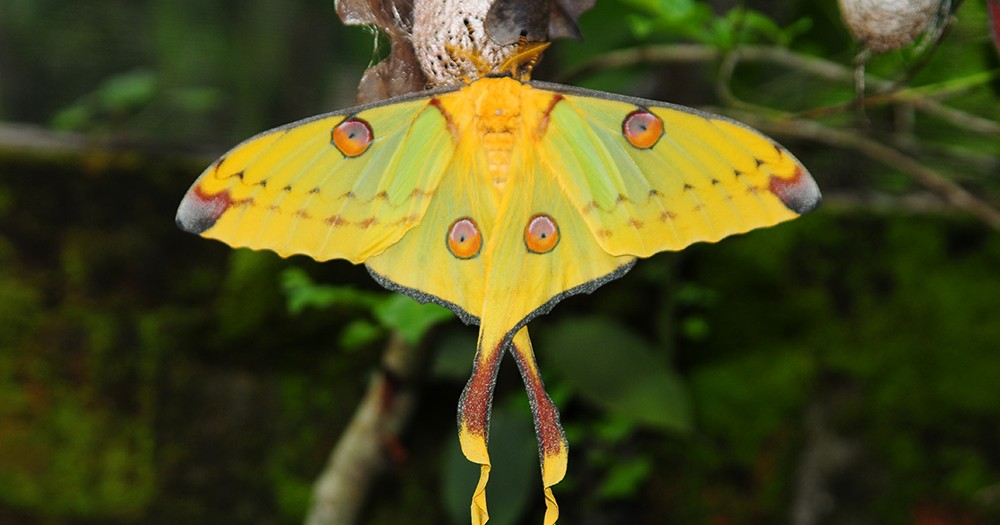The Life Cycle of a Moth
Moths go through four stages throughout their entire life. They start as an egg, hatch in a larval form, slowly transform into an adult as a cocoon, and then mate and lay eggs as an adult, continuing the cycle.
What Are The Stages Of The Life Cycle Of A Moth
1st Stage: Egg
Moths lay eggs on their preferred host plant or the soil close to such a plant. The eggs are either laid singly or in a cluster and vary significantly in appearance depending on the species. For instance, the eggs of the Frangipani hawk moth are pearly white, while those of the snowberry clearwing moth have a greenish tinge.
Typically, eggs take around a week to hatch. However, this isn’t always consistent. Sometimes when there is higher humidity and temperatures, like during summer, they may hatch in about 4 days. On the other hand, during winter, they may stay longer in this stage.
2nd Stage: Larva
After hatching, the caterpillars first eat the remains of their egg shell for nourishment. In this stage, the moth will constantly feed, only taking a break to shed its skin, doing so several times. Each new molt results in the larva becoming larger and will sometimes even change appearance and colors drastically. Once they have reached the final instar, the caterpillars look for a suitable location to undergo pupation inside a cocoon made of leaf litter or other material.
3rd Stage: Pupa
While the moth will not feed or even move in most cases during this stage, this is when its body breaks down and begins to transform into its adult stage. The food consumed as a larva is converted into energy for this metamorphosis.
4th Stage: Adult
After emerging from their cocoon, the adult moths have shriveled wings, using the remaining energy of the larval stage to expand them. Once they are ready, the moths, mostly the males, fly around searching for a mate. Males die shortly after mating, while females perish after laying their eggs.
How Do Moths Reproduce
Females release pheromones to attract their male counterparts. She then copulates with several males, collecting their sperm and other nutrients. Once she is done breeding, she will use the accumulated sperm to fertilize the eggs developing inside her.

